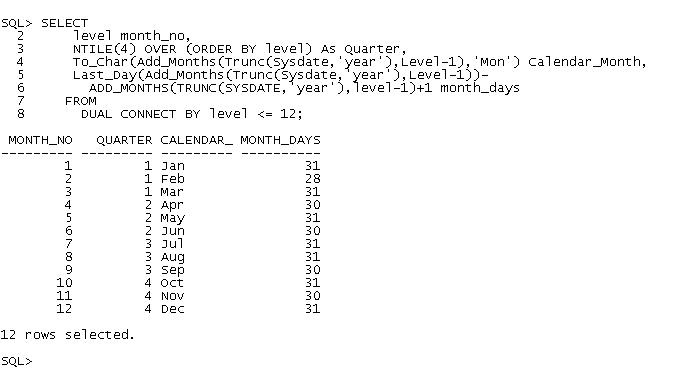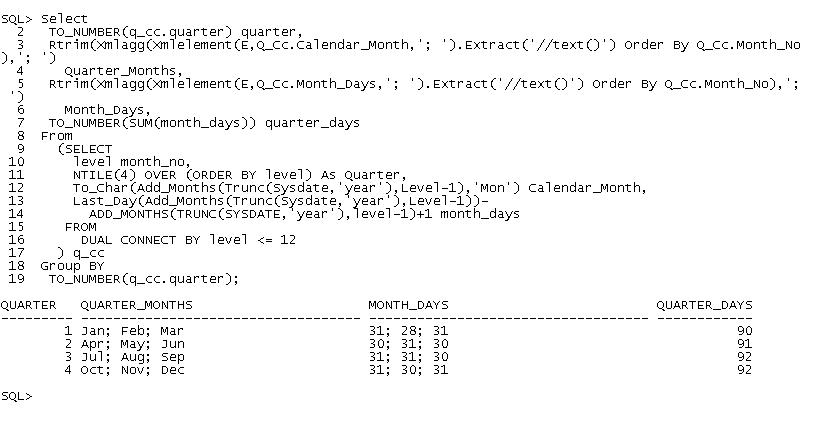Select
TO_NUMBER(q_cc.quarter) quarter,
Rtrim(Xmlagg(Xmlelement(E,Q_Cc.Calendar_Month,'; ').Extract('//text()') Order By Q_Cc.Month_No),'; ')
Quarter_Months,
Rtrim(Xmlagg(Xmlelement(E,Q_Cc.Month_Days,'; ').Extract('//text()') Order By Q_Cc.Month_No),'; ')
Month_Days,
TO_NUMBER(SUM(month_days)) quarter_days
From
(SELECT
level month_no,
NTILE(4) OVER (ORDER BY level) As Quarter,
To_Char(Add_Months(Trunc(Sysdate,'year'),Level-1),'Mon') Calendar_Month,
Last_Day(Add_Months(Trunc(Sysdate,'year'),Level-1))-
ADD_MONTHS(TRUNC(SYSDATE,'year'),level-1)+1 month_days
FROM
DUAL CONNECT BY level <= 12
) q_cc
Group BY
TO_NUMBER(q_cc.quarter);
The months and days of the month in the calendar data shown below can be grouped into quarter
based months and corresponding days using the Oracle XML function xmlagg() in a summary query.

The data separator/delimiter specified in this example query is "; ". It can be replaced by "," or "|" or
any other delimiter. The other alternative to this is to write a function (or table function) that
will mathematically group data with delimiter based on the grouping value - in this case the Quarter.
This XML function is useful in reports that can list multiple dates that a single invoice shipped on,
office visits of a patient for a single medical condition etc.

72961


